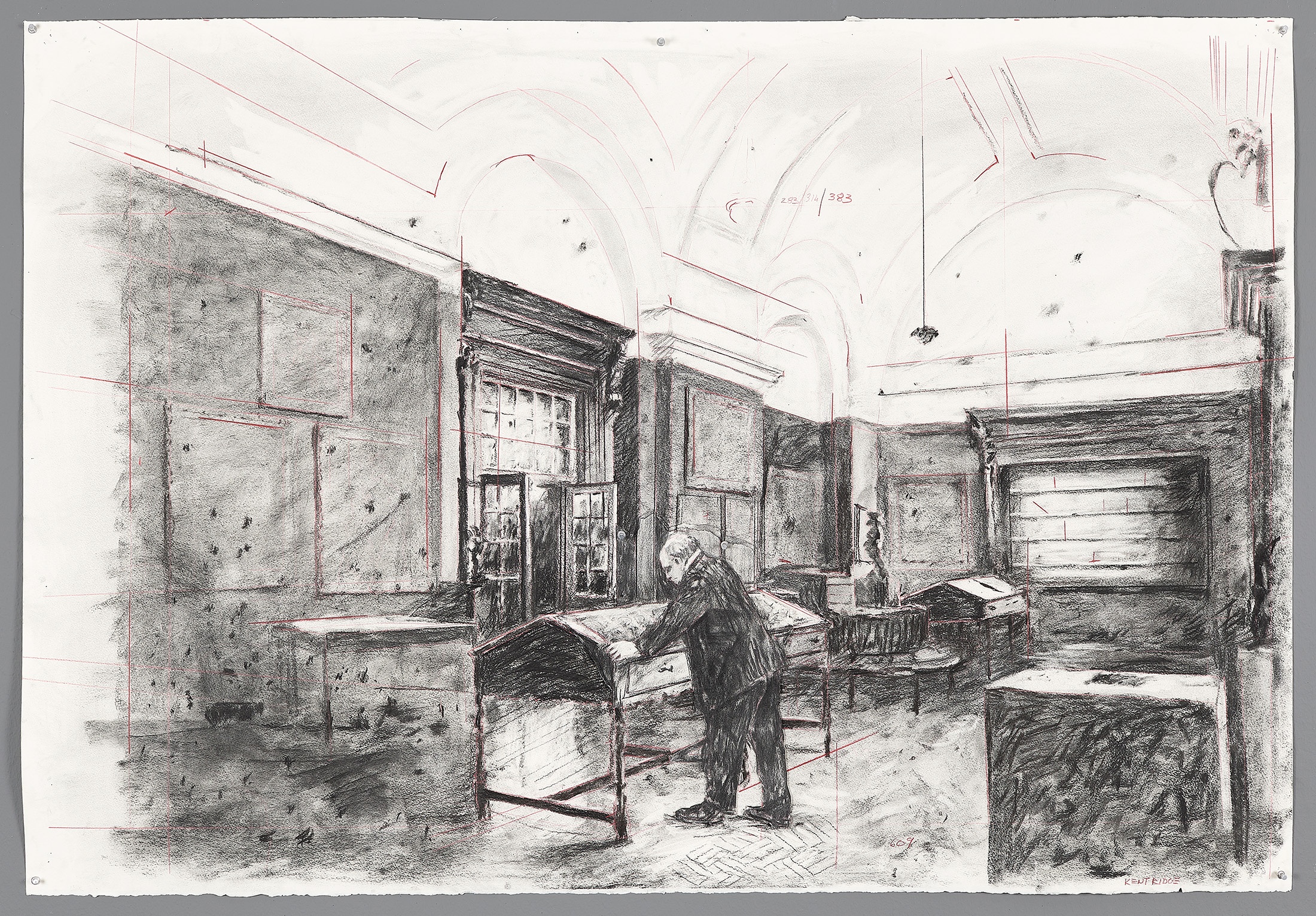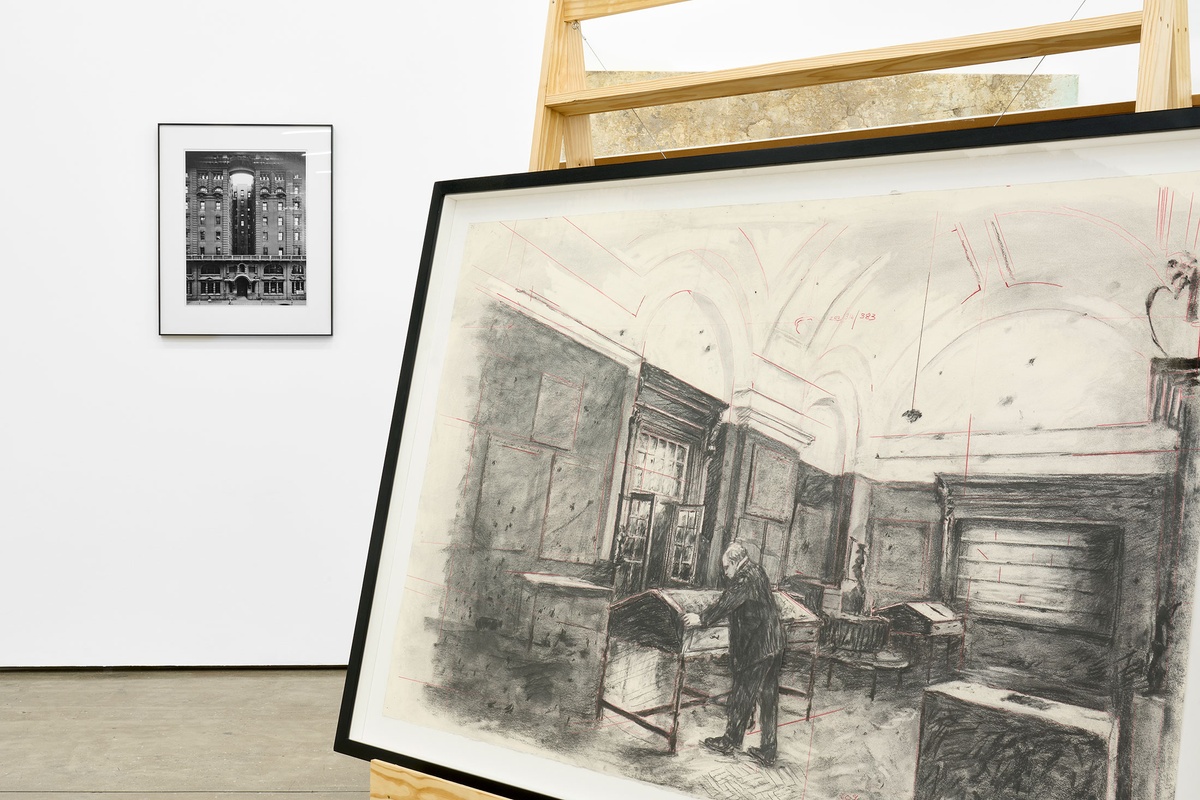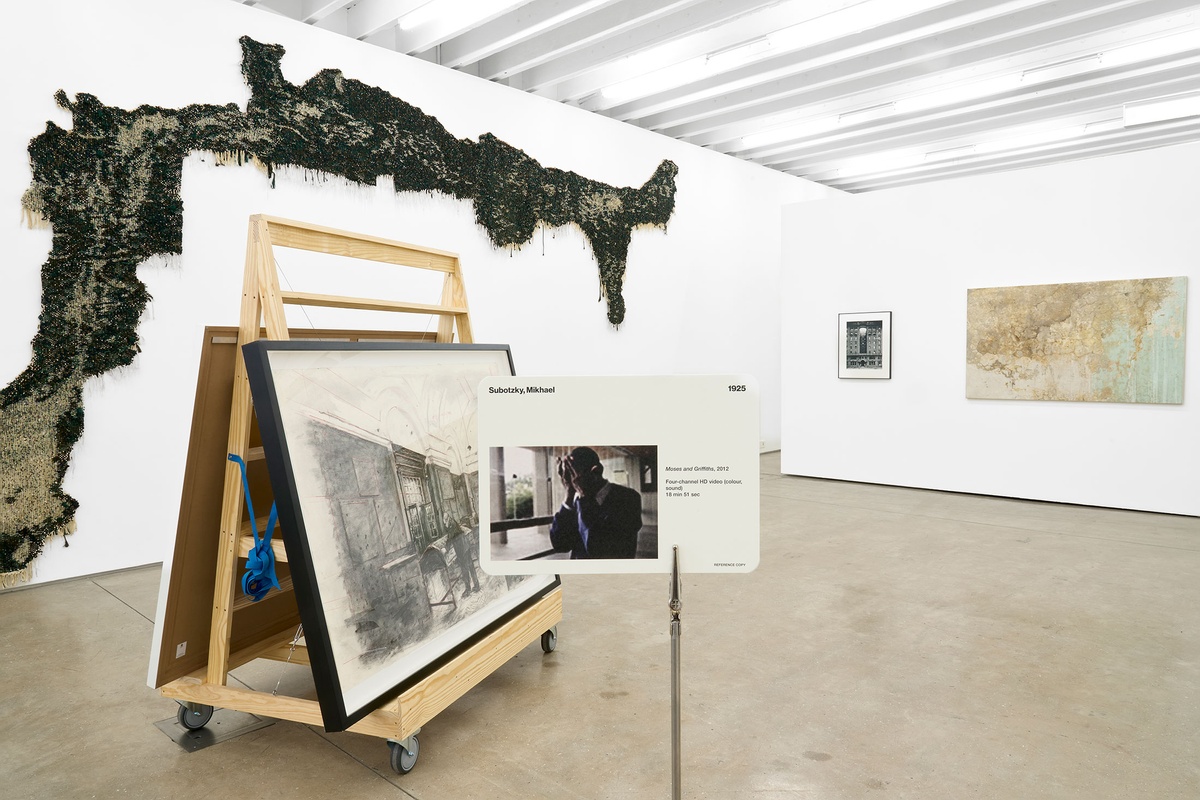William Kentridge

"William Kentridge draws the Johannesburg Art Gallery in charcoal and ink for his film-work City Deep (2018). The domed ceilings appear intact, the room fulfils the obligations of a museum (there are things on the wall, at the very least, and cabinets for safe holding and display). Why, then, this aura of misgiving? The shelves are empty, the storage units oddly stashed, while mining magnate Soho Eckstein insouciantly leans with both hands pressed against the vitrine. City Deep will show images of zama zama miners digging a pittance from the abandoned shafts beneath Johannesburg while JAG deteriorates and stumbles. The attendant sinkholes, dangers and entrapments of Johannesburg’s mining history provoke this informal economy – a desperate means of scraping a living while the city’s infrastructures collapse and fall away. It has been reported in the Daily Maverick newspaper as recently as November 2024 that JAG has extensive water damage, an ‘imperilled’ art collection, and is at risk of crumbling into ruin."
– Sightlines wayfinder
b.1955, Johannesburg
Performing the character of the artist working on the stage (in the world) of the studio, William Kentridge centres art-making as primary action, preoccupation, and plot. Appearing across mediums as his own best actor, he draws an autobiography in walks across pages of notebooks, megaphones shouting poetry as propaganda, making a song and dance in his studio as chief conjuror in a creative play. Looking at his work, a ceaseless output and extraordinary contribution to the South African cultural landscape, one finds a repetition of people, places and histories: the city of Johannesburg, a white stinkwood tree in the garden of his childhood home (one of two planted when he was nine years old), his father (Sir Sydney Kentridge) and mother (Felicia Kentridge), both of whom contributed greatly to the dissolution of apartheid as lawyers and activists. The Kentridge home, where the artist still lives today, was populated in his childhood by his parents’ artist friends and political collaborators, a milieu that proved formative in his ongoing engagement with world histories of expansionism and oppression throughout the 20th century. Parallel to – or rather, entangled with – these reflections is an enquiry into art historical movements, particularly those that press language to unexpected ends, such as Dada, Constructivism and Surrealism.
Moving dextrously from the particular and personal to the global political terrain, Kentridge returns to metabolise these findings in the working home of the artist’s studio, where the practitioner is staged as a public figure making visible his modes of investigation. Celebrated as a leading artist of the 21st century, Kentridge is the artistic director of operas and orchestras, from Sydney to London to Paris to New York to Cape Town, known for his collaborative way of working that prioritises thinking together with fellow practitioners skilled in their disciplines (for example, as composers, as dancers). Most often, he is someone who draws, in charcoal, in pencil and pencil crayon, in ink, the gestures and mark-making assured. In a collection of books for which A4 acted as custodian during the exhibition History on One Leg, one finds 200 publications devoted to Kentridge’s practice. In the end, he has said, the work that emerges is who you are.





